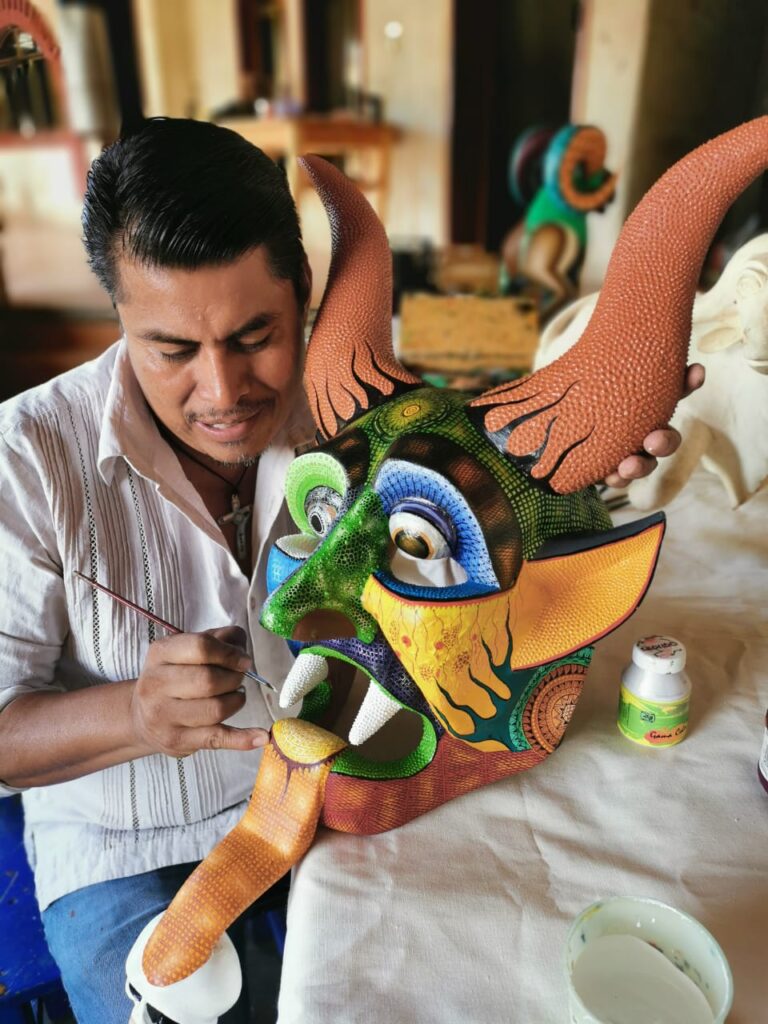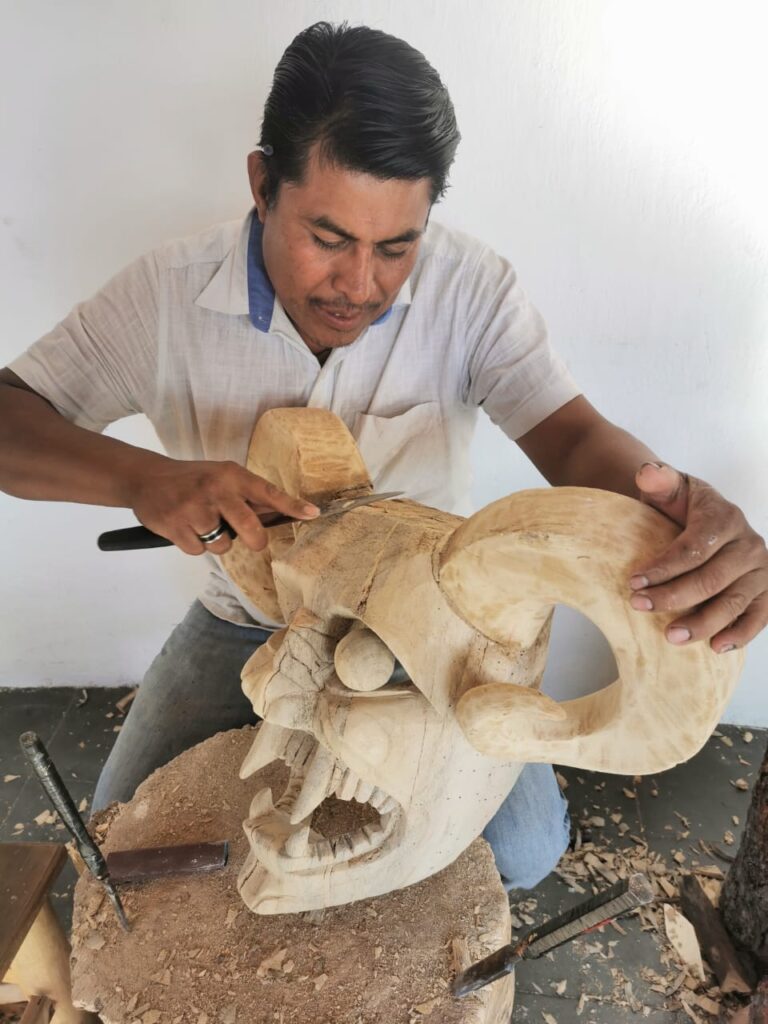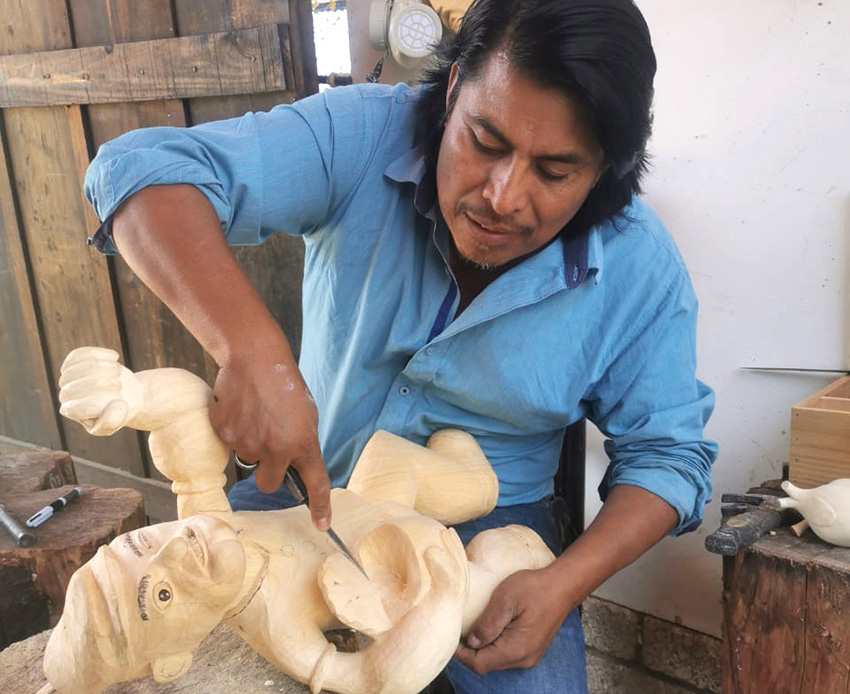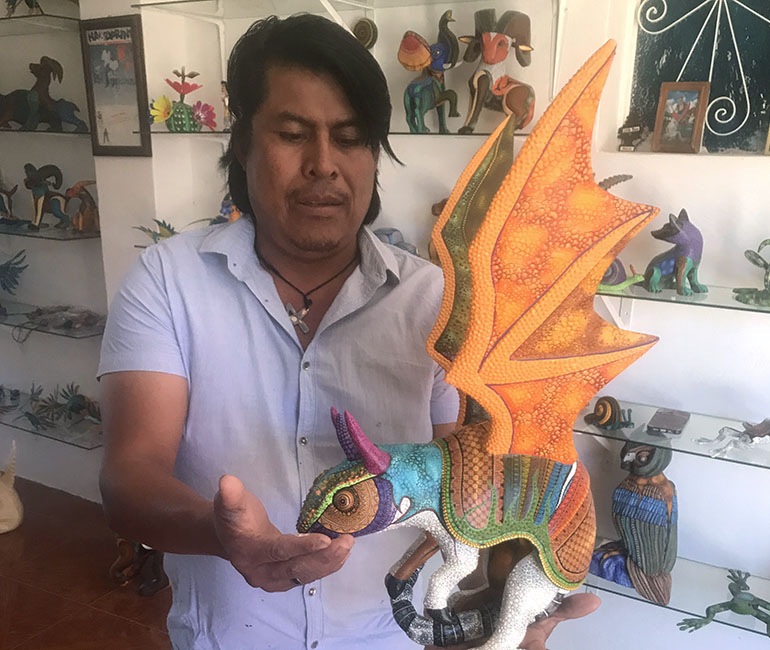Margarito Melchor Fuentes
Artist
Margarito Melchor Fuentes
San Martín Tilcajete
For three generations, the Melchor family has been a pillar of San Martín Tilcajete’s woodcarving tradition. While they specialize in masks, Margarito’s father is particularly well known for his carved cats. Margarito and his sons continue this legacy, each developing their own unique style. Together, the three generations still work side by side in their family studio in San Martín Tilcajete.
Margarito Melchor Fuentes is a pioneer in wood carving. Born on January 26, 1950, he began his career in this noble craft in 1970 at the age of twenty. His ancestors were artisans who, while cultivating the land, also crafted essential tools for agriculture, such as plows for furrowing and planting corn and beans, as well as yokes to harness bulls and carts for harvesting crops.
San Martín Tilcajete’s woodcarving tradition began in the 1960s with master artisan Isidoro Cruz Hernández, who first created acrobats, spinning tops, masks, and other wooden objects.
Margarito was the first director of FONART in Oaxaca and began exhibiting his work in 1968 in the United States, as well as in Tokyo and Osaka, Japan. In the early years, Isidoro Cruz invited several families to his home to learn the craft, including the Fuentes family (Epifanio Fuentes, Zenén Fuentes, and Celedonio Fuentes), the Xuana family (Ventura Fabián), and Margarito Melchor Fuentes. They initially crafted simple toys such as spinning tops, slingshots, and hopscotch sets.
Margarito also carved animal figures inspired by the creatures around him and those he kept at home—dogs, cats, bulls—and created representations of daily life in his community, such as a woman making tortillas or a farmer working his land.
“What I liked most,” he recalls, “was that I didn’t need special tools. I used what we had at home—the machete from the fields, knives, wooden mallets, or any other tool that could help me shape the wood the way I wanted. It was slow and complicated work because we had no real knowledge of how it was made, but every little piece of wood we removed brought us closer to the final creation”.




